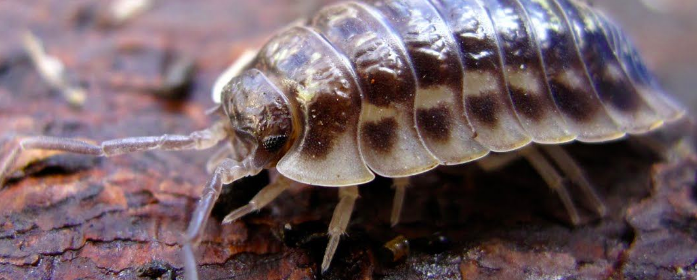
This arthropod belongs to the order of the Isopods, of which the vast majority of the 10,000 known species inhabit the marine environment. It is a Crustacean. It is therefore closer to shrimps, crayfish, lobsters and crabs than insects and centipedes.
|
|
Woodlice have an oval body and are approximately 12-15mm long, not exceeding 19mm. They are usually dull in color (grayish, brownish or blackish). These animals do not have a real shell, unlike many crustaceans. Their body is protected by an exoskeleton made up of plates. On the thorax are also seven pairs of legs called “pereiopods”. |
The head carries two pairs of antennae, two of which are long. The other two, called antennules , are very short and visible only on the ventral side of the animal. The eyes are compound and often underdeveloped (possibly due to their nightlife and not hunting for food). At rest, the mouthparts are covered with a pair of thoracic appendages called “maxillipeds”.
Arthropods with pale blue blood!
This is due to the presence of hemocyanin, a blue pigment with a copper core. This molecule carries oxygen around the animal’s body, as does hemoglobin (a red pigment with an iron core) in humans. The blood of woodlice becomes colorless when it is low in oxygen. To breathe, this terrestrial crustacean is generally provided with pseudotracheae located on the abdomen. The number of “lungs” varies according to the species (zero, two or five pairs). They appear as whitish spots visible to the naked eye on the ventral part of the woodlouse.
Rare crustaceans that spend their entire lives on earth
Experts believe that woodlice evolved from ancestors that lived at the bottom of the sea. They would have directly accessed the terrestrial environment from the ocean, without transition through freshwater environments. The majority of species can only survive in humid habitats. Some woodlice still live exclusively on the seashore, where they shelter in crevices in rocks or under washed up seaweed. The development of the young in an incubator pocket which in a way replaces the aquatic larval phase constitutes an important element in the evolution of the group towards terrestrial life.